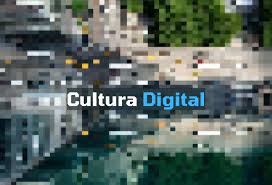Digital culture and the challenges of citizen communication

Since modernity, mass media have assumed an increasing centrality in everyday life, mediating our experience with the world and playing a fundamental role in defining social meanings. As actors, institutions and social devices, the media select, prioritize and give visibility to multiple social, economic, cultural and political aspects of contemporary societies, making a large part of our knowledge of the world based on consumption. of content, images and imaginaries offered by the media. Silverstone highlights the omnipresent nature of the media in our daily lives and the impossibility of escaping the representations they offer us about the world. “We have come to rely on media, both print and electronic, for entertainment and information purposes, convenience and security, to see some meaning in the continuities of experience [1] .”
In this perspective, other authors, such as Mata [2] (1999), were concerned with reflecting on the dynamics of transition from a mass culture to a media culture, seeking to understand the insufficiency of the notion of “mass” to explain the production and the consumption of meanings in contemporary societies. As institutions that generate meaning and energize social relations, the media began to occupy spaces and assume functions that previously belonged to other institutions in the field of politics, education, justice, among others, generating a media culture that It causes a reordering in human interactions and in the structuring of social practices. The notion of media culture suggests that the media is no longer just a place of interaction between production and reception, but has also become a “brand, model, matrix, rationality that produces and organizes meaning.” Mata highlights, in this aspect, the trust that the social movements themselves came to place in the capacity of the media to shape reality, making these movements worry about designing their practices and modalities of protest in the perspective of negotiating their public presence and visibility in the media.
It is worth adding to this debate the contributions of Latin American reception studies that, based on the reflections of authors such as Martín-Barbero [3] , García Canclini [4] and Orozco Gómez [5] , propose a step from media determinism to understanding of the mediations that operate for the resignifications, appropriations and uses of the media by different social sectors. Martín-Barbero offers us a vision of daily life as a space of production, interaction, negotiation, conflicts and resistance to the media, in which different dimensions such as reason, the unconscious, desire and pleasure are involved, questioning an understanding of everyday life as a space for the mere reproduction of actions and behaviors.
By questioning the informational model that dominated the analysis of media and technologies in Latin America, Martín-Barbero recovers the notion of technicality to remember that technique goes beyond the instrumental to reach the order of sedimentation of knowledge and the constitution of social practices. . That is, technique is understood as a perceptual organizer in which material transformation is articulated with discursive innovation. Confusing communication with techniques or means becomes, according to Martín-Barbero [6] , “as deforming as thinking that they are exterior and accessory to the (truth) of communication, which would be equivalent to ignoring the historical materiality of discursive mediations in which it is produced.”
The author's reflections on technicality continue to be useful to understand, more recently, the dynamics of emergence and expansion of digital culture since the late nineties and during the first decade of the 2000s. In a previous article [7] , we observed that, Initially, researchers began to define digital culture as a culture generated around Information and Communications Technologies (ICT), specifically the Internet, giving rise to the formulation of concepts such as cyberculture and cyberspace. In Latin America, these studies went through several stages. In the mid-1980s, the Internet was seen as “a new frontier in the evolution of civilization [8] ” and cyberspace as shaping a “virtual” world, with its own characteristics in relation to the “real” world. . In the 1990s, studies began to focus primarily on virtual communities and online identities, with the concept of cyberculture at the center of academic debate.

The 2000s mark the emergence of new approaches in digital culture studies that began to assume conceptual perspectives such as interactions, sociocommunicational and digital networks [9] , discourses, access and digital divide. In the context of research in communication and culture and the so-called cultural studies, some of these perspectives can be seen in the works of Jesús Martín-Barbero [10] , García Canclini [11] and Guillermo Orozco [12] , among others. . In the mid-2000s, research that analyzes technological appropriation and redesign based on cultural practices and social movements still stands out, pointing to the articulation of cultural, social and political practices in our societies. Approaches to these new approaches, we find, in the Latin American research of Finquelievich [13] , Rocío Rueda [14] , Lago Martínez [15] ; Cogo [16] , Cogo and Brignol [17] , Cogo, Brignol and Fragoso [18] , Cogo, Nihil Olivera [19] , Cogo and Santos [20] among many other authors, who, in different countries, focus on forms to maintain and establish social ties through technologies and their peculiarities in the dynamics of collective subjects and social movements.
Thus, over the last decades, the understanding of digital culture has expanded to include reflections on the imbrication of digital technologies in the cultural processes of contemporary societies. It is thus recognized that digital culture is not limited to cyberspace (and online culture), but rather adds to the hypertextuality between different social media and cultural industries (such as radio, cinema, television, etc.) and the processes of social interaction in a broader cultural context [21] .
Globalization processes contributed to the constitution of digital culture. Already in the 1980s, Castells [22] recalled the government policies that favored processes of formation of global networks of multimedia companies through public policies and institutional changes based on liberalization, privatization and deregulation, with reduction of the presence of public communication and deepening the commercial nature of the media. Thus, we can observe the formation of multimedia business groups that cover all forms of communication and the Internet itself; greater segmentation, personalization and diversification of the media offering, with special emphasis on the cultural identification of publics or audiences.
Digital culture also reconfigured the processes of social participation and the positions occupied by producers and receivers/consumers in the media, instigating the search for other names, such as prosumers, to define the positions and possibilities of consumer participation in the media. communication dynamics. Aparici draws attention to the market logic and political emptying that go through the origin of the term prosumer. In counterpoint to the political dimension of horizontality and participation of society in the exercise of the right to communication that demarcated the construction of the notion of Emirec (sender-receiver) by Cloutier, the prosumer evokes, according to the author, an integrated subject to the logic of the market under the dynamics of free work and from the extension of time and productive spaces. “The prosumer theory aims to reproduce the hegemonic economic model that seeks solutions, from the marketing area, to the constant challenges that the media and entertainment industry must face in the digital world.” In this regard, Orozco Gómez warns about the excess of social enthusiasm in the face of the horizontal processes provided by digital networks: “Not even the growing interaction with the Internet annihilates and eradicates the traditional and highly questioned roles of “spectators” (passive) among its users. users, it is by no means a guarantee of true horizontal participation.”
The implications of the new configurations brought by digital culture have been the subject of academic research in several other aspects. Among them, we can highlight some that are relevant to guide communication practices:
1-The surveillance of the network society through the collection of personal data on the Internet and its implications for the right to privacy;
2-The role of disinformation and fake news in the weakening of democracies and, in relation to this role, the need to develop digital literacy projects to build citizenship;
3-The reconfigurations of politics from the migration of institutional politics, activism and citizen mobilizations to digital media;
4-The speed and excess of production and supply of media images as a form of denunciation that shocks and moves, but that does not necessarily generate mobilization and social change;
5- The implications of the growing interweaving between information and entertainment (infotainment) in the education of consumers and citizens;
6-The reconfigurations and precariousness of the world of work and capitalism itself as a consequence of the centrality of digital platforms (Airbnb, Uber, etc.); and finally,
7-The growing inequality in access and distribution of digital technologies and resources that deepens the so-called digital divide.
* Full Professor of the Post-Graduation Program in Communication and Consumer Practices at ESPM, São Paulo, Brazil. Researcher in Productivity 1C of CNPq (National Council for Scientific and Technological Development.
[1] SILVERSTONE, Roger. Why study at midday? São Paulo: Loyola, 2002, p. 12.
[2] MATA, María Cristina. From mass culture to media culture. Communication Dialogues . Lima: Felafacs, n. 56, p. 80-90, out. 1999.
[3] MARTIN-BARBERO, Jesus. Cartographer's profession – Latin American journeys of communication in culture. São Paulo: Loyola, 2004
[4] GARCÍA CANCLINI, Néstor. Consumers and Cities . Rio de Janeiro: Editora da UFRJ, 2010.
[5] OROZCO GOMEZ, Guillermo. The challenge of knowing to transform – Media, audiences and mediations
Communicate, n.8, p. 25-30, 1997.
[6] MARTIN-BARBERO, Jesus. Cartographer's profession – Latin American journeys of communication in culture. São Paulo: Loyola, 2004, p. 237.
[7] BRIGNOL, Liliane. Dutra.; COGO, Denise; MARTINEZ, Silvia Lago. NETWORKS epistemological dimension and constitutive mediation of the communicational and cultural mutations of our time. In: JACKS, N.; SCHMITZ, D.; WOTTRICH, L. (Eds.). A new map to investigate cultural mutation – Dialogue with the proposal of Jesús Martín-Barbero. Quito: CIESPAL, 2019. https://ciespal.org/descarga-un-nuevo-mapa-para-investigar-la-mutacion-cultural-dialogo-con-la-propuesta-de-jesus-martin-barbero/
[8] RUEDA ORTÍZ, Rocío. Cyberculture: metaphors, social practices and network collectives. Nomads . n. 28, p. 8-20, April 2008, p. 8 http://nomadas.ucentral.edu.co/index.php/inicio/21-ciberculturas-metaforas-practicas-sociales-y-colectivos-en-red-nomadas-28/255-cibercultura-metaforas-practicas-sociales -and-network-collectives .
[9] RECUERO, Raquel. Social networks on the internet . Porto Alegre: Sulina. 2009 e SCHERER-WARREN, Ilse, Social networks and movements in the information society. New Society . n. 196, p. 77-92, April-March, 2005b. http://nuso.org/revista/196/desafios-de-la-sociedad-global-de-la-informacion/.
[10] MARTIN-BARBERO, Jesús. The relevance on the horizon of new technologies and the communication society. In: HOPPENHAYN, Martín; SOJO, Ana. SOJO (Orgs.). Senses of belonging in fragmented societies: Latin America in a global perspective. Buenos Aires: 21st Century, 2011.
[11] GARCÍA CANCLINI, Nestor. Readers, viewers and Internet users . São Paulo: Iluminuras and Itaú Cultural, 2015.
[12] OROZCO GÓMEZ, Guillermo. The contemporary communication condition – Latin American Challenges of research into interactions in the network society. In: JACKS, Nilda. (ed.). Analysis of reception in Latin America – a historical memory with perspectives for the future. Quito: CIESPAL, 2011a, p. 377-405. https://libreria.ciespal.org/producto/analisis-de-recepcion-en-america-latina-nilda-jacks/
[13] FINQUELIEVICH, Susana (org.) Citizens online! Social ties in cyberspace. Buenos Aires: Ciccus/La crujía, 2000.
[14] RUEDA ORTÍZ, Rocío. Cyberculture: metaphors, social practices and networked collectives. Nomads . n. 28, p. 8-20, April 2008. http://nomadas.ucentral.edu.co/index.php/inicio/21-ciberculturas-metaforas-practicas-sociales-y-colectivos-en-red-nomadas-28/255-cibercultura -practical-social-and-network-collective-metaphors
[15] [15] LAKE MARTÍNEZ, Silvia. Communication, art and culture in the digital age. In: LAGO MARTINEZ, Silvia (Coord.). Cyberspace and Resistance, Exploration in digital culture. Buenos Aires: Hekht, 2012., LAGO MARTÍNEZ, Silvia. Internet and digital culture: political and militant intervention. Nomads. n. 28, p. 102-111, Apr. 2008 e LAKE MARTÍNEZ Silvia et al. Internet and political struggle . Buenos Aires: Intellectual Capital, 2006.
[16] COGO, Denise. Brazilians in Spain: communication and transnational activism in a context of economic-political crisis. Communication & Society , v. 32, p. 223-238, 2019. https://revistas.unav.edu/index.php/communication-and-society/article/view/36763
[17] COGO, Denise, BRIGNOL, Liliane Dutra. Social networks and internet reception studies. Matrices. v. 4, no. 2 P. 75-92, Jan./Jun 2011. http://www.revistas.usp.br/matrizes/article /view/38293/41117
[18] COGO, Denise; BRIGNOL, Liliane; FRAGOSO, Suely. Everyday practices of access to ICTs – another way of understanding digital even. Keyword . v. 18, no. 1 p. 156-183., 2015, http://palabraclave.unisabana.edu.co/index.php/palabraclave/article/view/4155 .
[19] COGO, Denise; OLIVERA, Mauricio Nihil. #NoNosVamosNosEchan – internet, online activism and narratives of new Spanish emigrants. Matrices (ONLINE). v. 11, p. 165-187, 2017. https://www.revistas.usp.br/matrizes/article/view/122220
[20] COGO, Denise; SANTOS, Deborah Rodriguez. Cuban diaspora on Twitter impacts of Covid-19 on mobilizations for immigration rights. [CyCL] Latin American Controversies and Concurrences, v. 12, p. 123-157, 2021. https://ojs.sociologia-alas.org/index.php/CyC/article/view/247
[21] LAKE MARTÍNEZ, Silvia. Communication, art and culture in the digital age. In: LAGO MARTINEZ, Silvia (Coord.). Cyberspace and Resistance, Exploration in digital culture . Buenos Aires: Hekht, 2012.
[22] CASTELLS, Manuel. Communication and Power . Madrid: Alianza Editorial, 2010.
Article published in Punto de Encuentro Magazine (SIGNIS ALC), which is available for free download here






